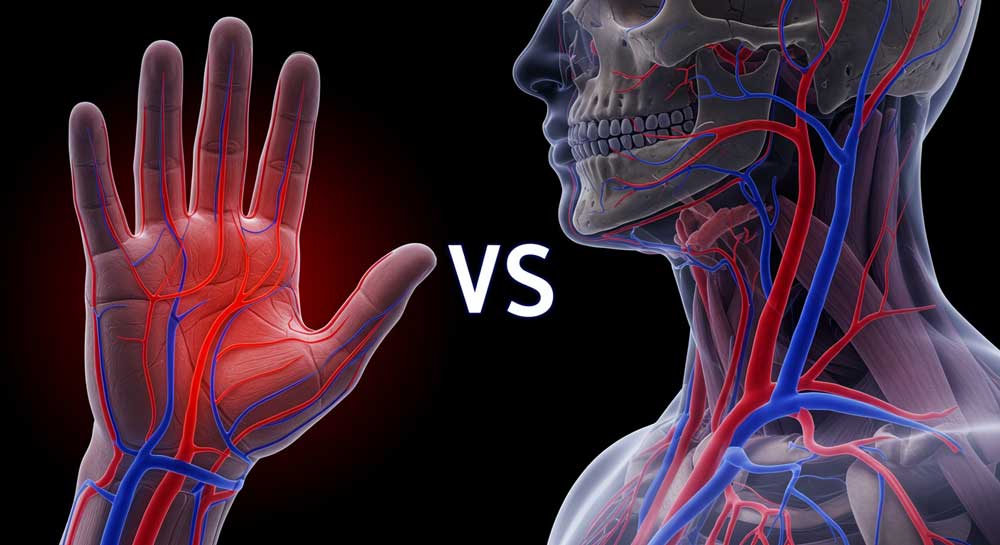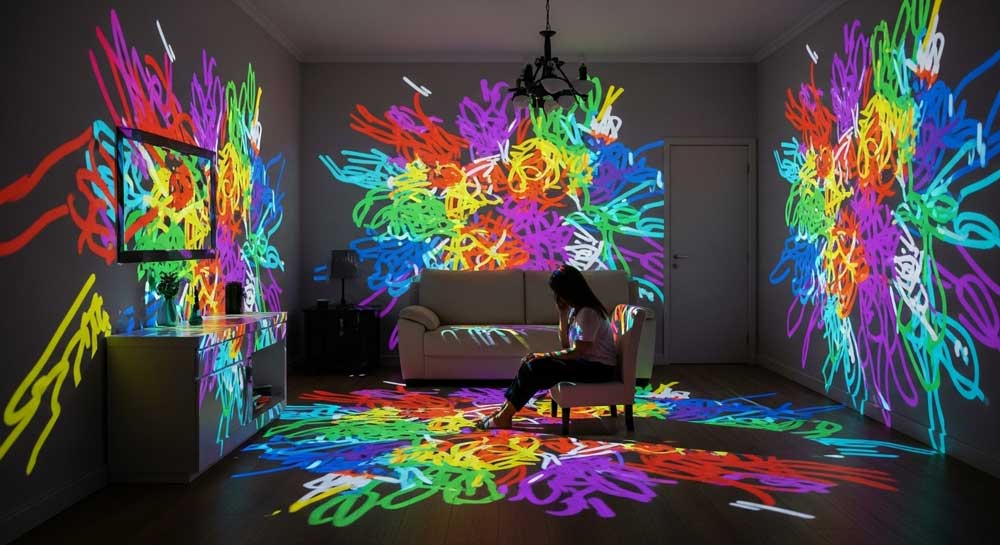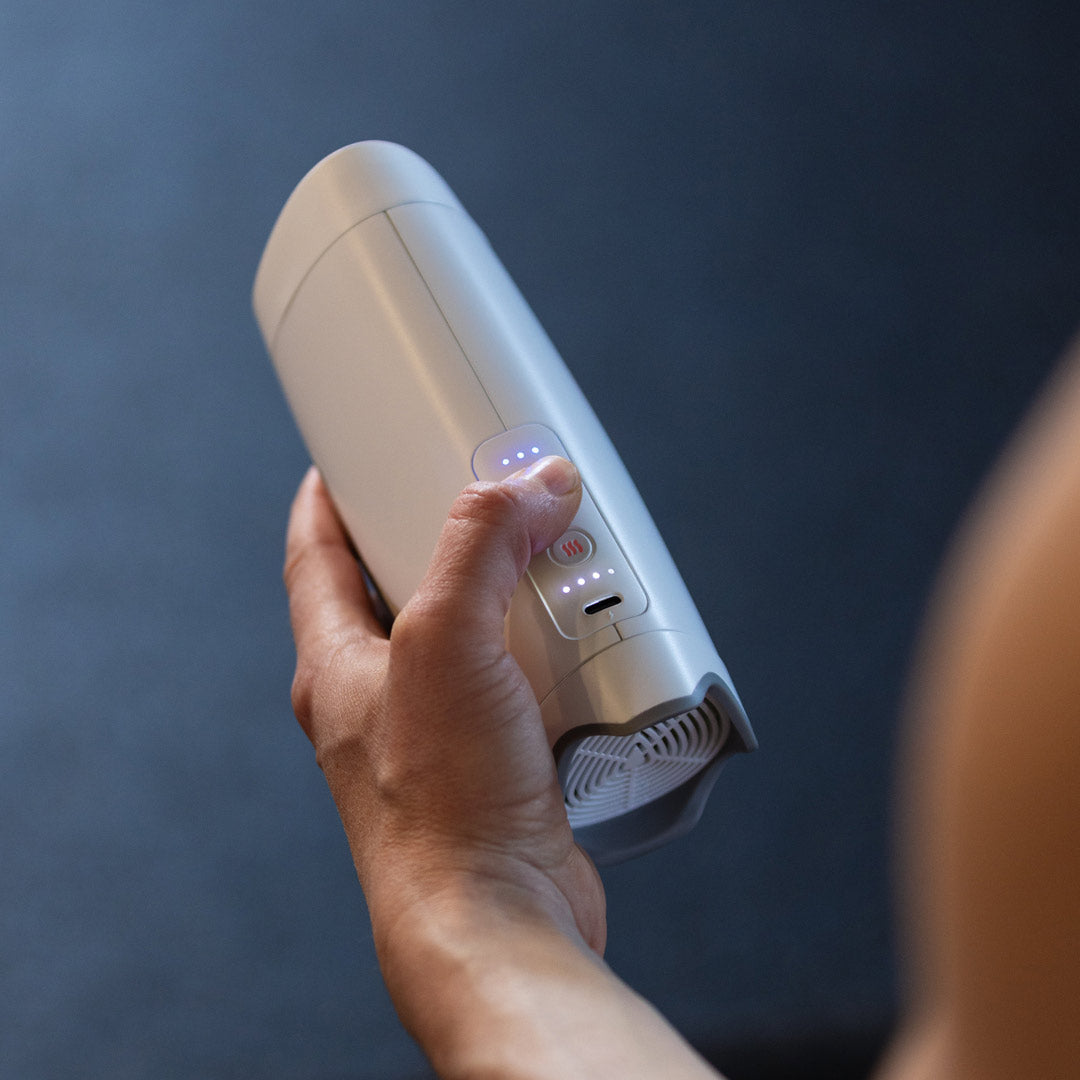Hot flashes affect over 75% of women during menopause, disrupting sleep, work, and overall quality of life. While hormone replacement therapy provides relief for some, many women prefer non-hormonal strategies due to personal choice or medical concerns. Researchers have been exploring the role of cooling as a safe, drug-free intervention. In a randomized clinical trial of a handheld cooling device (Menopod®), 70% of women in the active treatment group reported significant reductions in hot flash intensity compared to placebo (Reid et al., 2015).
Cooling the palms and neck works by leveraging the body’s natural physiology. The palms contain AVAs, specialized blood vessels that rapidly exchange heat, making them an ideal target for quick cooling. At the same time, applying cold to the neck engages thermoregulatory pathways and may provide an additional calming effect through the vagus nerve. Together, these actions can blunt the sudden surge of heat that defines a hot flash.
Unlike ice packs or cold towels, portable cooling devices are designed for targeted, on-demand relief. They fit discreetly into a handbag or nightstand drawer, making it possible to manage symptoms in the middle of the workday, while traveling, or at night without elaborate preparation. This convenience matters, because hot flashes are unpredictable and often strike at the least convenient times.
As awareness of palm and neck cooling grows, it has the potential to become a standard recommendation for hot flash management alongside lifestyle and dietary strategies. Beyond reducing discomfort, reliable access to cooling can improve sleep quality, workplace productivity, and overall well-being. For many women, this represents an empowering, practical step toward regaining control during the menopausal transition.






Leave a comment
This site is protected by hCaptcha and the hCaptcha Privacy Policy and Terms of Service apply.